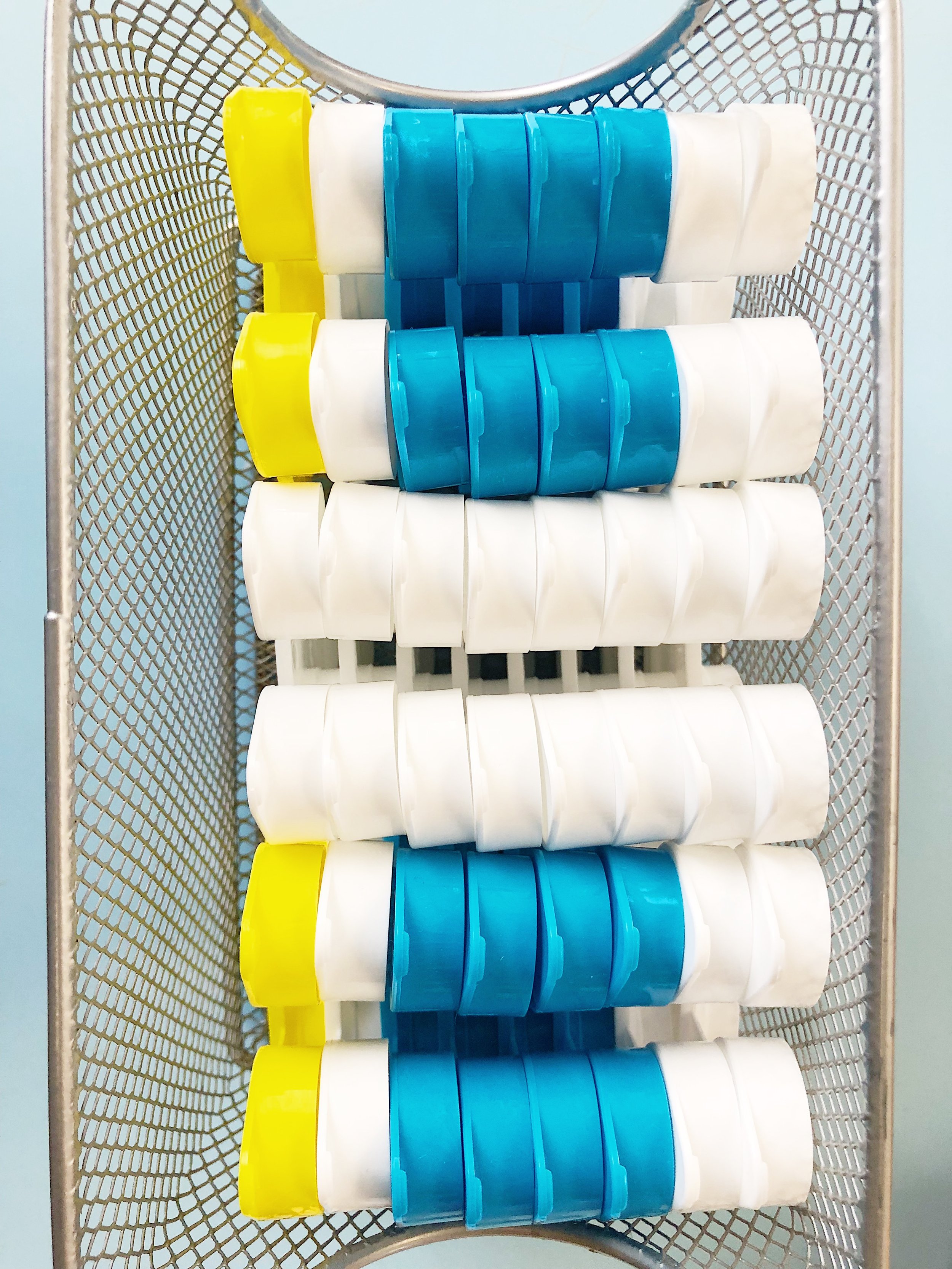Are You Taking Care of Your Contact Lenses?
When was the last time you really looked at your contact lens case? When was the last time you actually replaced your contact lens case? Did you even know you were supposed to replace it?Contact lens cases can be hotbeds for bacteria, fungal, and amoebic colony growth…despite the addition of the contact lens solutions. If not properly cared for, over time a “biofilm” can grow and coat the inner surface of the case. This serves as a breeding ground for bacteria and other dangerous microbes. Even IF you properly follow contact lens cleaning and rinsing instructions, these nasty bacteria can still find a way to grow, multiply, and form this undetectable film on the contact lens case and contact lenses, which can then be transferred to the eye upon insertion. These deposits may irritate the cornea–the soft clear tissue on the front of the eye—causing the wearer to rub the eye and the eye to appear red. The back and forth pressure from rubbing can make microscopic scratches on the surface of the eye. These small breaks in the tissue act as open pathways for microbes to invade the eye, causing infectious keratitis and/or a corneal ulcer. Infectious keratitis (sometimes resulting in a corneal ulcer) is the most common infection from wearing contact lenses. It is when the cornea becomes infected, usually with bacteria. When severe, an infection can cause scarring of the cornea, sometimes making a corneal transplant necessary. This condition is generally not contagious. All sorts of things have been found growing in contact lens cases - bacteria, viruses, fungi and even protozoa. These bacteria also can be found on the surface of your skin, in soil, or in tap water. What are the risk factors for developing infectious keratitis?Contact lens wearSleeping in contact lenses (increases risk 8 times!)Inadequate disinfection of contact lensesTrauma
Even IF you properly follow contact lens cleaning and rinsing instructions, these nasty bacteria can still find a way to grow, multiply, and form this undetectable film on the contact lens case and contact lenses, which can then be transferred to the eye upon insertion. These deposits may irritate the cornea–the soft clear tissue on the front of the eye—causing the wearer to rub the eye and the eye to appear red. The back and forth pressure from rubbing can make microscopic scratches on the surface of the eye. These small breaks in the tissue act as open pathways for microbes to invade the eye, causing infectious keratitis and/or a corneal ulcer. Infectious keratitis (sometimes resulting in a corneal ulcer) is the most common infection from wearing contact lenses. It is when the cornea becomes infected, usually with bacteria. When severe, an infection can cause scarring of the cornea, sometimes making a corneal transplant necessary. This condition is generally not contagious. All sorts of things have been found growing in contact lens cases - bacteria, viruses, fungi and even protozoa. These bacteria also can be found on the surface of your skin, in soil, or in tap water. What are the risk factors for developing infectious keratitis?Contact lens wearSleeping in contact lenses (increases risk 8 times!)Inadequate disinfection of contact lensesTrauma What are symptoms of infectious keratitis?Blurry visionRed eyesPainLight sensitivityForeign body sensationTearingEye dischargeIf you experience any of these symptoms, remove your contact lenses immediately and call your eye doctor ASAP. If untreated, keratitis can cause vision loss or blindness. Early treatment is imperative! If there is an infection on the cornea, a scraping of the tissue will be taken and sent to the laboratory to assess the type of bacteria/fungus and the specific sensitivities to antibiotic drops. Your best line of defense is following these instructions EVERYDAY:NEVER “top off” and reuse the solution in your case for a second day.After removing contact lenses, empty the case, and rinse it with fresh contact lens solution. Do not use water, or rewetting or saline solution which is not intended for disinfection.Rub the case with clean fingers and further wipe it with a clean tissue because such mechanical friction has been shown to reduce biofilm in lens casesTurn it over (to keep the dust out) and let it air dry.REPLACE the case every 3 months.
What are symptoms of infectious keratitis?Blurry visionRed eyesPainLight sensitivityForeign body sensationTearingEye dischargeIf you experience any of these symptoms, remove your contact lenses immediately and call your eye doctor ASAP. If untreated, keratitis can cause vision loss or blindness. Early treatment is imperative! If there is an infection on the cornea, a scraping of the tissue will be taken and sent to the laboratory to assess the type of bacteria/fungus and the specific sensitivities to antibiotic drops. Your best line of defense is following these instructions EVERYDAY:NEVER “top off” and reuse the solution in your case for a second day.After removing contact lenses, empty the case, and rinse it with fresh contact lens solution. Do not use water, or rewetting or saline solution which is not intended for disinfection.Rub the case with clean fingers and further wipe it with a clean tissue because such mechanical friction has been shown to reduce biofilm in lens casesTurn it over (to keep the dust out) and let it air dry.REPLACE the case every 3 months. Which of these do you practice?Lastly, if you want to avoid many of these problems with contact lens cases, solutions, and a higher risk of keratitis, consider daily disposable contact lenses! These are contact lenses that you typically put on in the morning, and dispose the same day in the evening.The advantages of daily disposable contacts include:No contact lens case to worry about contaminating and disinfectingNo protein, calcium, lipid, and biofilm buildup on a reworn contact lensDon’t have to worry about disinfecting and soaking contact lenses overnightLower risk of keratitisNo risk of irritation with contact lens solutionsContact lenses are more comfortableConvenience, especially when travelingRecommended for sports, especially swimming, diving, hiking, camping
Which of these do you practice?Lastly, if you want to avoid many of these problems with contact lens cases, solutions, and a higher risk of keratitis, consider daily disposable contact lenses! These are contact lenses that you typically put on in the morning, and dispose the same day in the evening.The advantages of daily disposable contacts include:No contact lens case to worry about contaminating and disinfectingNo protein, calcium, lipid, and biofilm buildup on a reworn contact lensDon’t have to worry about disinfecting and soaking contact lenses overnightLower risk of keratitisNo risk of irritation with contact lens solutionsContact lenses are more comfortableConvenience, especially when travelingRecommended for sports, especially swimming, diving, hiking, camping

